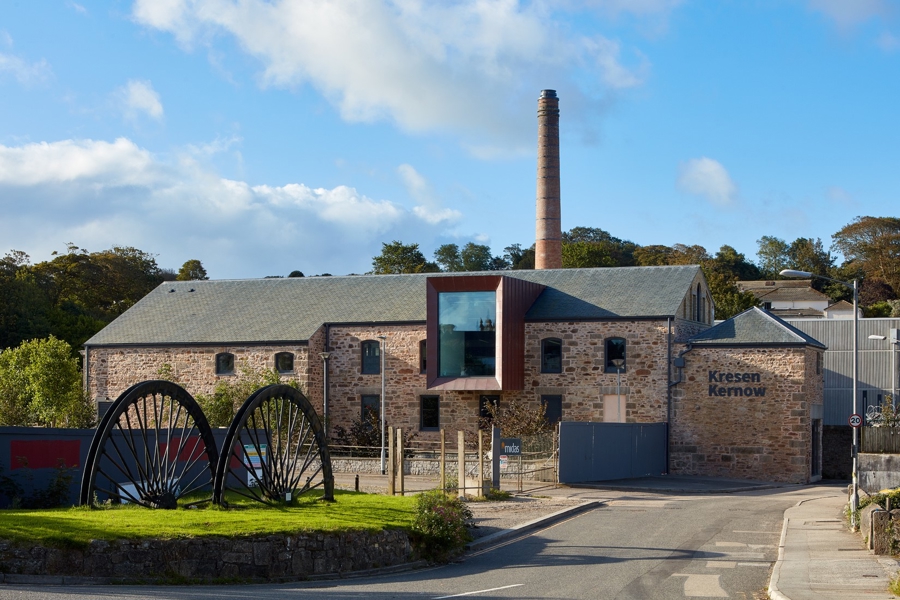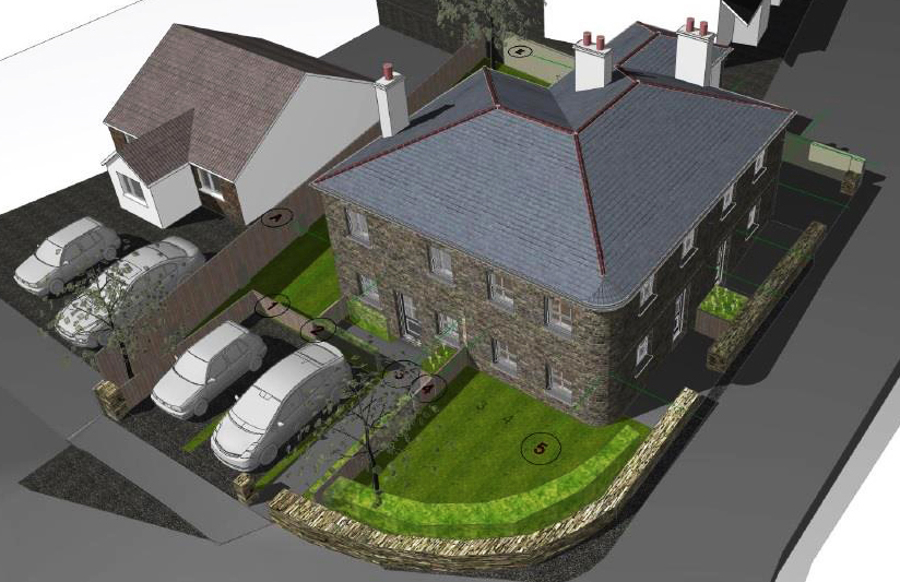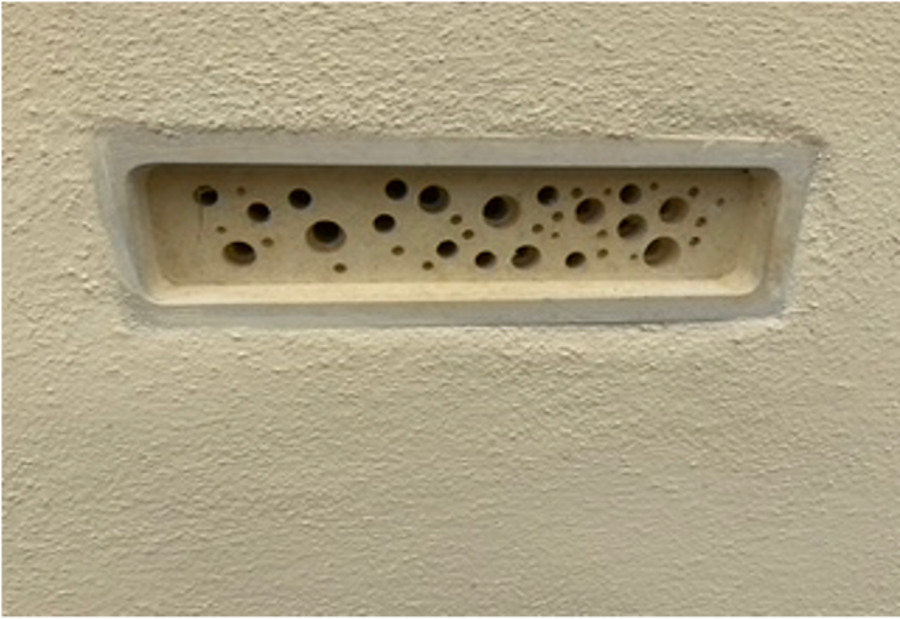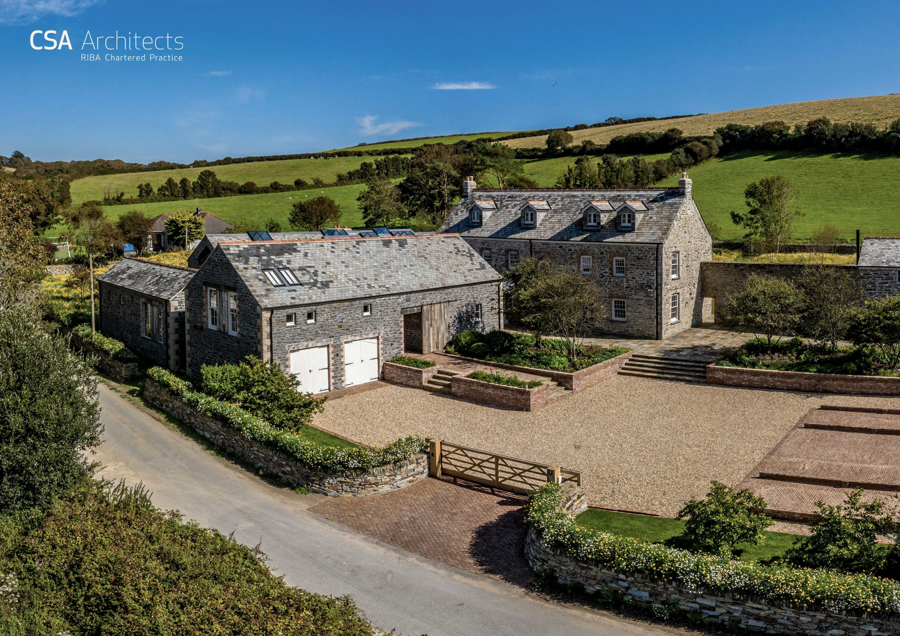2020 Winners announced for Cornish Buildings Awards and applications open for 2021
Recognising the best in Cornish Architecture
Every year the Cornish Buildings Group presents awards for the best in good design and the cream of recently completed or renovated buildings in the county. Patrick Newberry, Chairman of the Group, said “Despite all the complications of the pandemic, the Cornish Building’s Group has managed to complete the judging of its annual Buildings Award Scheme and is delighted to announce the results.
“For 50 years we have been fighting for better design and conservation of the built heritage in Cornwall. Our Awards are a big part of that battle - encouraging architects and builders to create great buildings worthy of Cornwall’s amazing landscape. We were not going to let the pandemic stop us.”
Patrick Newberry added “The uncertainty caused by the pandemic did not deter entrants from submitting some excellent new buildings and restorations for the Awards – all were of a very high standard. Yet again our Awards scheme has shown that good architecture and design is flourishing in Cornwall.”
This year the CBG has partnered with the Cornwall and West Devon Mining Landscape World Heritage Site.
Site to give additional special awards to new buildings or restorations that have enhanced the WHS. The WHS is concerned with conserving the outstanding universal value of the Cornwall and west Devon mining landscape dating principally from 1700 to 1914, the period during which the most significant industrial and social impacts occurred. The ten areas of the WHS together form a unified, coherent cultural landscape and share a common identity as part of the overall exploitation of metalliferous minerals here from the eighteenth to twentieth centuries.
Julian German, Chair of the World Heritage Site Partnership Board said:
‘The World Heritage Site are delighted to partner with the Cornish Buildings Group in the creation of two new Awards. Both organisations have a shared goal in encouraging sustainable, heritage-led regeneration, both through conservation of historic buildings or the development of high quality, energy efficient new structures that demonstrate how they take inspiration from the our internationally important historic mining landscapes. We are grateful to the CBG panel for undertaking the final assessment on the WHS shortlist, as this ensured total objectivity. The recipients of our first WHS Awards have both set an example for others to follow, and we congratulate them for their sensitive response to the special character of their WHS locations.’
The CBG is also delighted to announce another new award, the Jenny Gason Award for the best restoration of a small building. Jenny was a much-valued member and secretary of the Group for many years. She contributed in so many ways to the life and success of the Group, including bringing a discerning eye and impeccable taste to the Annual Awards judging. It is a great pleasure for the CBG to be able to perpetuate Jenny’s memory by making this new annual award, kindly funded by the Gason family.
An exhibition of winning entries will tour Cornwall throughout the year.
Applications are being accepted for next year’s awards from Monday 8th March. For more details on our Awards scheme and how to submit - and to see this and previous year's winners - please go to:
http://sites.google.com/site/cornishbuildingsgroup/awards/awards-2019
The Cornish Buildings Group Awards Scheme is Cornwall’s most prestigious architectural prize celebrating excellence in areas of architectural design and applied conservation and restoration work. Every year the Council of the Cornish Buildings Group considers a broad range of project types ranging from housing estates to bus shelters; informed historic conservation to radical modern design and independent craft skills to small and large-scale repairs and renovations.
Our judges offer wide ranging experience in many aspects of Cornish architecture and architectural practice including conservation, design, environment, heritage, planning and research. When judging we evaluate the quality of design and/or conservation philosophy, assess the suitability of materials, appropriateness of the solution to context and the overall impact of the building.
We value entries that build on Cornish precedent or take such precedents forward in a courageous and aesthetically pleasing manner. This lively and vigorous process ensures that the Cornish Buildings Group award scheme maintains its position as a true mark of excellence.
These citations reflect our conclusions, commending some excellent work, while on others constructively offering thoughts on what might have been done differently.
This year’s Award Winners are:
CORNISH BUILDINGS GROUP AWARD AND CORNWALL AND WEST DEVON MINING LANDSCAPE WORLD HERITAGE SITE AWARD
- Kresen Kernow (Purcell for Cornwall Council)
Kresen Kernow is a remarkable project which transformed the derelict and fire damaged former Redruth Brewery into a state of the art archive and local studies centre for Cornwall. The building cleverly integrates the surviving historic fabric of the old brewery with new additions and interventions to form elegant and well-planned public space, secure archive storage, library, study areas and offices. The judges were especially impressed by the attention given to the detailing of the interiors and thought that the way in which the layout mixes up working spaces and public exhibition space works particularly well to connect users of the new facility with the conservation and archival work going on at Kresen Kernow. The building is an outstanding example of how to re-purpose a derelict historic building to create a stunning new public facility whilst also stimulating the regeneration of a historic mining town. It will quickly become one of Cornwall’s most iconic buildings.
Kresen Kernow is also the first winner of the newly inaugurated Cornwall and West Devon Mining WHS Award in recognition of its contribution to enhancing the Outstanding Universal Value of the WHS. The Brewery was an important part of the commercial landscape and economy of Redruth during the mining era. As a service industry supporting the mining community and as part of the eco-system of the mining era, in which mining entrepreneurs invested, it was an important part of the historic landscape. The re-purposing of the brewery provides a sustainable future for an important building, using appropriate traditional and contemporary materials, and following good conservation principles as well as attaining high energy efficiency.
The redevelopment has set a very high standard and, in so doing, new expectations for the quality of development on this site. Whilst not being a feature of Outstanding Universal Value (OUV) [international importance] in its own right, Kresen Kernow is likely to have a positive impact on future projects within the wider development site that are attributes of OUV.
CORNISH BUILDINGS GROUP COMMENDATIONS
- Waterhouse, St Minver (ARCO2 for Mr and Mrs Jones)
This dramatic new house sits on an elevated site overlooking the upper reaches of the Camel Estuary. It has been designed with the aim of capitalising on the stunning views of the Estuary that the site affords, whilst not imposing itself aggressively within the landscape. These competing challenges have been balanced well. The main living areas of the house provide very good vantage points from which to see the view through enormous windows but the dark materials and recessive design of the Estuary facing front, combined with the house’s very low profile and alignment with a pre-existing hedge mean that the house is not at all prominent when viewed across the river. The house has been built to Passivhaus principles and deploys other high environmental techniques, including the use of ground source heat pumps and wildflower roofs.
The layout of the house is well composed, with bedrooms arranged along the back of the house, serviced by a top lit corridor which doubles as a picture gallery. An archway through the main form signals the main entrance of the house and affords access for vehicles to a rear courtyard which means that parked cars do not interrupt the stunning views from the main front of the house. Overall the judges thought that Waterhouse is a fine addition to Cornwall’s built environment which will be well regarded for many years to come.
CORNISH BUILDINGS AWARDS - COMMENDATIONS
- Polgreen Manor, St Mawgan (CSA Architects)
Extending a large old house and making it suitable for modern living patterns is a considerable challenge which has been well met by CSA Architects at Polgreen Manor. The old farmhouse, in an enchanting sequestered valley, inland from Mawgan Porth, has been carefully restored and extended by two finely crafted ranges containing kitchen, other service rooms and principal living rooms. The new additions group well with the old farmhouse creating what, at first sight, appears to be a historic farm complex, but which, on closer examination, reads clearly as an old house with significant modern extensions. The extensive layout has been carefully orchestrated so that the individual elements inter relate well, creating a coherent, sizable house and defining well-considered landscape spaces. The standard of design and craftsmanship is consistently high throughout the old and new parts of the house, with considerable attention to detail.
- The Old Grammar School, Camelford (Stephen Fisher and CAD Architects)
The Old Grammar School at Camelford is a handsome late nineteenth century school building sited above the town with commanding views over the valley of the historic ford. The building was poorly extended over the years, particularly after its conversion to Council Offices in the early 1960s, when it suffered the worst of municipal maltreatment. Following the closure of the Council Offices in 2013, the building was neglected and allowed to decay. Stephen Fisher and CAD Architects removed the detritus of poor-quality extensions and converted the original school building into a series of attractive individual houses. Six new homes were also built in the grounds of the Old School. The new work and restoration were carried out to a high standard resulting in a series of thoughtful, well designed houses all deserving of a Commendation. What particularly distinguished this entry, however, was the fine design of the public realm. The layout of the site is intelligent, creating a series of welcoming spaces which encourage and facilitate a warm sense of community. This Is certainly not a ‘gated community’ and the whole development is a model of how to create a small, but civilised, new neighbourhood for the modern world, without segregating the development from wider society and the locale.
CORNWALL AND WEST DEVON MINING LANDSCAPE WORLD HERITAGE SITE AWARDS - HIGHLY COMMENDED
- Medda (Andrew Golay and Hormann Architects for Anna Wilson)
Replacing an uninspiring 1960s bungalow in a street running alongside the fine Plain-an-Gwarry Chapel designed by Redruth architect James Hicks, this compact development of three starter homes was considered by the WHS judges to be a significant improvement to the setting of the Chapel and an interesting example of how good quality low cost housing can be built in the World Heritage Site whilst respecting the Outstanding Universal Value. The new building now makes a more confident contribution to the townscape, with increased height and now linking the two streets on this corner site. The subtle curve which links the two facades was an appropriate idea and lifts the design. The judges had reservations about some details, such as the constructional quality of stonework and some were disappointed by the absence of visible lintels, however, in the round it was thought that this building has several lessons for how sensitive additions to the built environment can be made in the WHS whilst intensifying the use of existing brownfield sites.
JENNY GASON AWARD FOR RESTORATION OF A SMALL HISTORIC STRUCTURE
- Fradd’s Meadow (Ian Whitehouse)
The judges were delighted to give the inaugural Jenny Gason Award to this remarkable restoration of a historic cob wall in St Tudy. Using traditional cob techniques, the wall has been restored to its original profile and coated in traditional lime render. The work is of an exemplary quality and makes a wonderful contribution to the historic streetscape in St Tudy. Provision for bees has also been made with the insertion of bee bricks in the walls. If only equivalent care was taken of every boundary wall or fence in Cornwall!





